North-east Scots have been eating them for years, but no one has ever mistaken the buttery for a health food…
Until now.
Peterhead’s Hame Bakery has thumbed its nose at the long-held belief that the buttery — made with lard, butter and salt — is one of the unhealthiest breakfasts around.
In a dramatic makeover, the family owned Hame has launched a reformulated version of its traditional buttery that has 73% less saturated fat and 91% less salt.
The ‘healthier buttery’, the bakery said, is a direct response to demands from the younger generation, who appear to be deserting the north-east staple in droves.
Hame said the number of butteries it sells on a Saturday has dropped in recent years from 600 to just 240 as youngsters go elsewhere.
“We’ve seen a real shift, which we’ve put down to an increased focus on health,” owner Patrick Jackson said.
When traditional equals healthy
But does the food that was created as an energy-packed — and easily-stored — snack for our hardy North Sea fishermen need a modern makeover?
Not according to everyone. In fact, some argue the buttery is fine just the way it is.
“They ARE healthy,” says north-east food expert Martin Gillespie. “They’re just not low-calorie.”
Martin is the one of the founders of the World Buttery Championships, so admits to a slight bias towards his beloved butteries.
But he also is a staunch defender of food made in the traditional way — using ingredients that look more like the contents of your grandmother’s shopping list and less like the makings of a chemistry experiment.
And if that’s the yardstick for a health food, he says, then old-fashioned butteries are as healthy as they come.
“You’ve got your five ingredients — flour, yeast, salt, butter and lard,” Martin explains. “And they’re all natural ingredients. You could make butter yourself, if you had a cow.”
Butteries a throwback to a time before ultra-processed food
It’s a view gaining traction in the food world as supermarkets and multinational food companies come under fire for selling ‘ultra-processed foods’ (UPFs).
According to the British Heart Foundation, more than half of the calories an average person in the UK eats and drinks now comes from ultra-processed foods.
The danger is that these foods, while packed with salt, sugars and saturated fat, have little nutritional value.
Traditional foods, then, are a throwback to a time before UPFs — a living food fossil unsullied by modern processing methods.
A study published last year by two South Korean and one Finnish university professors found that traditional diets are associated with “reduced risks of chronic diseases, such as heart disease, diabetes, and obesity”.
“By incorporating traditional foods into modern diets, we can promote healthier eating patterns and prevent diet-related health problems,” the professors concluded.
Martin adds: “There’s a trend for people moving back to the slower methods of producing things, rather than getting instant gratification from going to Krispy Kreme and buying 12 doughnuts and shoving them down your neck.”
What does Inverurie nutritionist Laura Leslie think?
Still, Martin stops short of labelling the buttery a ‘health food’.
“If you’re eating 10 butteries a day then you probably need to give yourself a bit of a shake,” he laughs.
Inverurie clinical nutritionist Laura Leslie agrees.
“Would I recommend my clients to eat one every day?” she asks, before answering her own question.
“No.”
But, she says, the body is more than capable of handling a buttery now and again.
Plus, Laura is careful never to brand any food unhealthy.
“As soon as you start labeling foods as bad, we’re almost putting them on a pedestal,” she says.
“I don’t think there’s anything wrong with the buttery, especially if it’s traditionally made.”
Deep-fried butteries and the curse of the topping
Still, the buttery’s reputation often precedes it. Though that may have more to do with the almost infinite variables of toppings people in the north-east put on them, not all of them healthy.
Would you eat a burger that swaps out the bun for two butteries and adds a slice of bacon? Or even a deep fried buttery with jam and cream on top?
All of these have been tried more than once by local buttery pioneers.
But if you take the buttery on its own, then it’s reputation as calorie-laden is undeserved, argues Martin.
“Mountaineers and hill climbers I’ve spoken to think there’s 500 calories in a buttery and that they can use them like a Kendall Mint Cake to power them through their walks,” he says.
“They are always disappointed to find out they are just 220 calories.”
Also, Martin says there are healthier alternatives to traditional toppings, though he does admit he’s now stretching the buttery’s health credentials to breaking point.
“Put an egg on top and that’s going to give you all the benefits of an egg” he says, laughing. “Or marmalade, which will give you vitamin C.”
And if you really want to take it to the extreme, butteries are made with flour which is rich in Vitamin D AND calcium.
“So that’s another benefit,” Martin adds, tongue now firmly in cheek. “They’re ram-filled with calcium and Vitamin D!”
We taste test the ‘healthier’ buttery
So what does Hame Bakery’s ‘healthier’ buttery taste like, writes Evening Express reporter Andy Morton?
To find out, I pitted the low-cal bake against Hame’s traditionally-made buttery, both of which can be bought at the Queen Street bakery in Peterhead.
Read on to find out which came out top in the battle of the butteries.
Taste Test: The great buttery face-off
First impressions of the healthy version are not great.
“It’s very different to a proper buttery,” says Graham Fleming, a colleague I’d roped in to my buttery face-off.
Graham is from Falkirk, so doesn’t have the life-time of buttery-eating experience you’d perhaps expect from an EE reporter.
On the other hand, he is the only person I could find in the office willing to eat while having his picture taken.
Thankfully, he does like butteries, and is aware of their bad reputation. He remembers the first one he ever had as being a bit too greasy, and very salty.
“Grease is maybe the wrong word,” he adds, “though I did feel I was committing a sin.”
His verdict on the ‘healthier’ buttery? A bit too much like eating a wholemeal roll, which makes sense as the Hame bake is based on its popular multi-seed roll.
As for me, it gets a passing grade, but only just. Once I slather it in my favourite buttery topping of butter and jam, things improve greatly.
Next up is the Hame Bakery’s traditionally-made buttery — or the main event, as Graham and I call it.
And it doesn’t disappoint. Fresh, light and saltier than a Peterhead sea dog.
Hame Bakery had every right to ask what a healthy buttery might look like.
What we want to know is — why tamper with perfection?
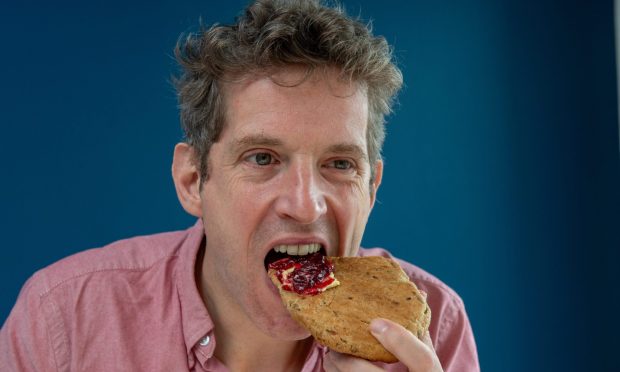
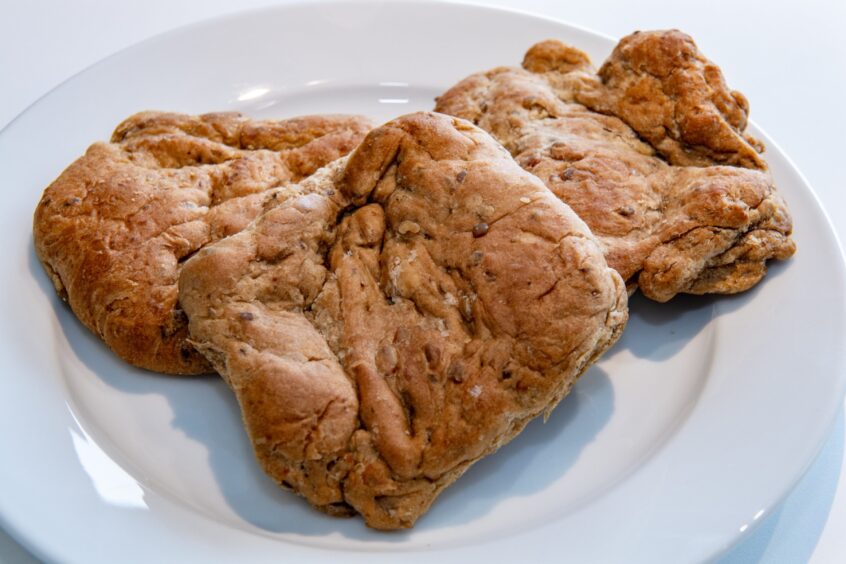
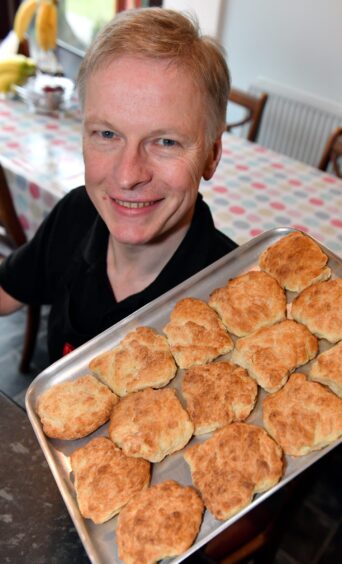
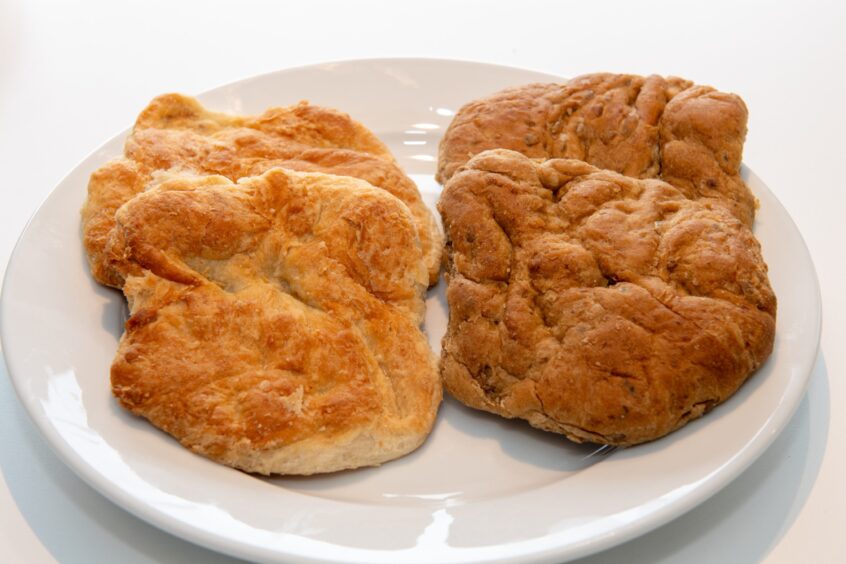

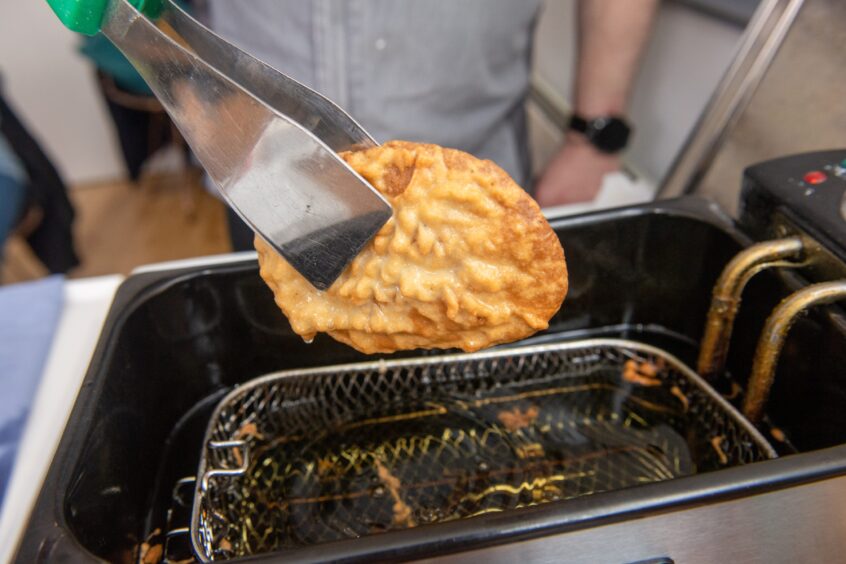
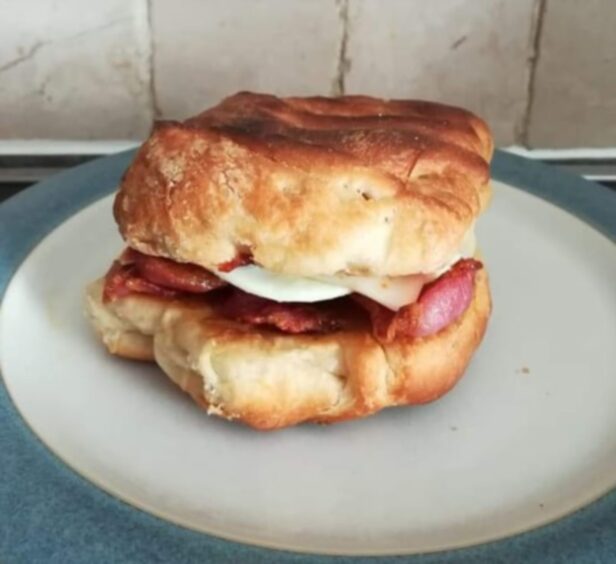
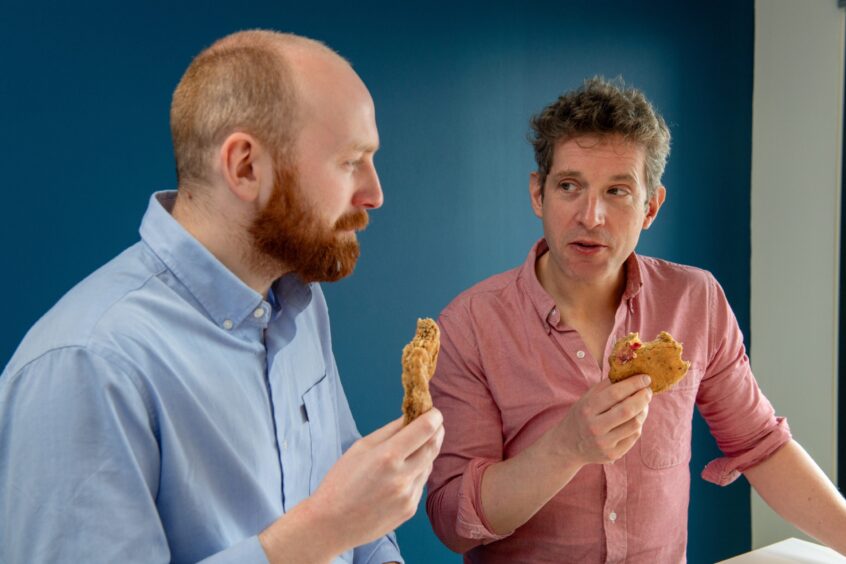
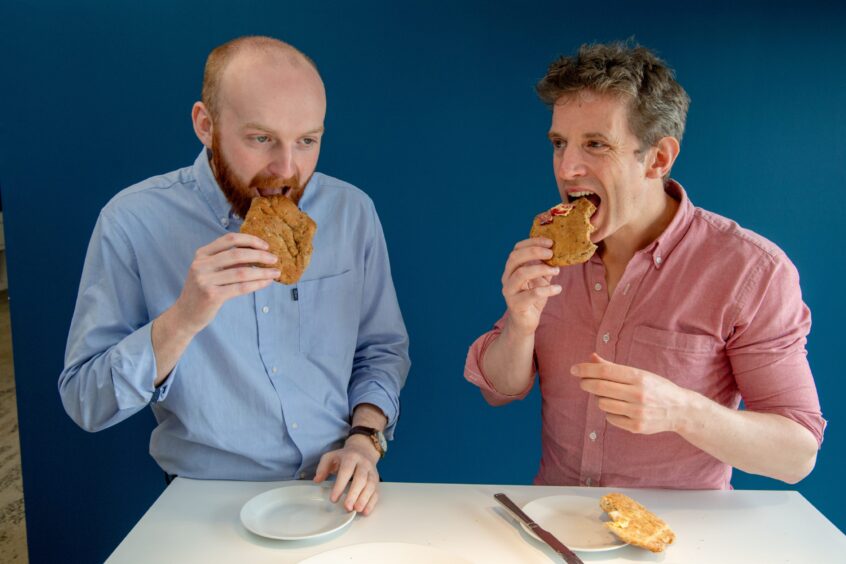
Conversation